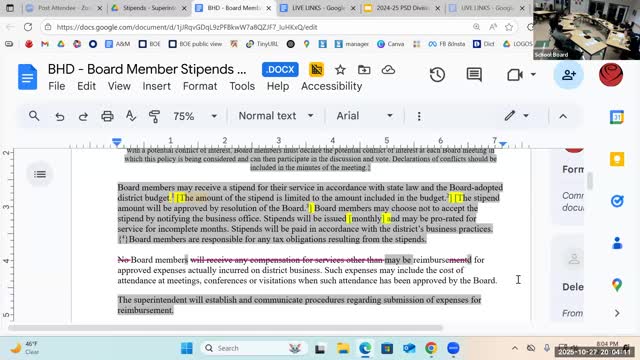Parkrose board hears data showing racial disparity in cell-phone referrals; staff propose further review
October 28, 2025 | Parkrose SD 3, School Districts, Oregon
This article was created by AI summarizing key points discussed. AI makes mistakes, so for full details and context, please refer to the video of the full meeting. Please report any errors so we can fix them. Report an error »

Parkrose School District leaders told the school board on Oct. 27 that about 400 disciplinary referrals were issued after a new cell-phone policy took effect and that approximately 70% of those referrals involved students of color.
What happened: The district implemented a stricter cell-phone policy this school year. In the first month of implementation staff issued roughly 400 referrals for violations; district presenters said roughly 250–275 of those referrals occurred during the first month and that referral volume has since slowed. Staff reported that about 70% of the referrals were for students of color; they noted that the overall student population is about 70% students of color, but that the rate of discipline per student showed a disparity (students of color were disciplined at a higher rate relative to peers).
Why it matters: Board members and student representatives said the disparity raises equity concerns and asked for analysis and interventions. District leaders said the disparity is not explained by differential phone usage and emphasized the need to examine staff responses, relationships and approaches to enforcement.
District next steps and discussion: The superintendent recommended staff professional learning, inclusion of student voice in planning, and deeper reporting in upcoming high-school administrative updates. He asked administrators to return with a more complete report and suggested the educational equity advisory committee and student representatives be involved in diagnosing root causes and proposing changes to practice.
Quote: "That data is alarming — we need to understand whether this is our approach or our policy implementation," a board member said; the superintendent added that referral rate has slowed since the initial rollout but that the disparity still requires attention.
Ending: The board asked for a follow-up presentation from high-school administrators with more disaggregated data and recommended engagement with students and staff to adjust practice while maintaining the policy’s objectives.
What happened: The district implemented a stricter cell-phone policy this school year. In the first month of implementation staff issued roughly 400 referrals for violations; district presenters said roughly 250–275 of those referrals occurred during the first month and that referral volume has since slowed. Staff reported that about 70% of the referrals were for students of color; they noted that the overall student population is about 70% students of color, but that the rate of discipline per student showed a disparity (students of color were disciplined at a higher rate relative to peers).
Why it matters: Board members and student representatives said the disparity raises equity concerns and asked for analysis and interventions. District leaders said the disparity is not explained by differential phone usage and emphasized the need to examine staff responses, relationships and approaches to enforcement.
District next steps and discussion: The superintendent recommended staff professional learning, inclusion of student voice in planning, and deeper reporting in upcoming high-school administrative updates. He asked administrators to return with a more complete report and suggested the educational equity advisory committee and student representatives be involved in diagnosing root causes and proposing changes to practice.
Quote: "That data is alarming — we need to understand whether this is our approach or our policy implementation," a board member said; the superintendent added that referral rate has slowed since the initial rollout but that the disparity still requires attention.
Ending: The board asked for a follow-up presentation from high-school administrators with more disaggregated data and recommended engagement with students and staff to adjust practice while maintaining the policy’s objectives.
View the Full Meeting & All Its Details
This article offers just a summary. Unlock complete video, transcripts, and insights as a Founder Member.
✓
Watch full, unedited meeting videos
✓
Search every word spoken in unlimited transcripts
✓
AI summaries & real-time alerts (all government levels)
✓
Permanent access to expanding government content
30-day money-back guarantee

